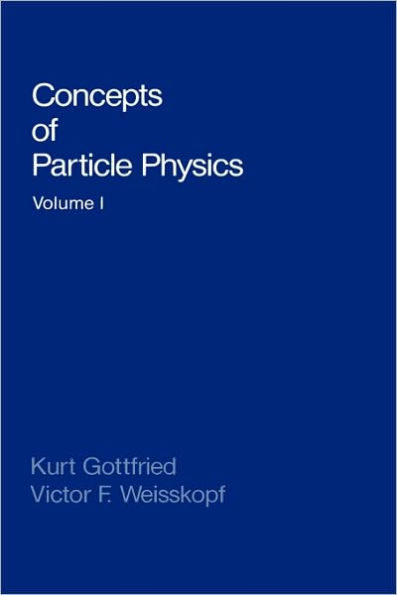| I. | Basic Concepts | 1 |
| A. | The Evolution of the Particle Concept Before the Advent of Quantum Mechanics | 3 |
| B. | Nonrelativistic Quantum Mechanics and Atomic Physics | 9 |
| 1. | The Principles of quantum mechanics | 9 |
| (a) | State vectors. Observables | 9 |
| (b) | The equations of motion | 10 |
| (c) | Unitary operators and symmetries | 11 |
| (d) | Stationary states | 11 |
| (e) | The natural system of units | 13 |
| 2. | Resolution of the Boltzmann paradox | 13 |
| 3. | Rotations and angular momentum | 15 |
| (a) | The rotation operators | 16 |
| (b) | Angular momentum eigenstates | 17 |
| (c) | Angular momentum j = 1: vectors | 18 |
| (d) | Angular momentum j = 1/2: spinors | 19 |
| (e) | Two-level systems and the spin analogy | 21 |
| (f) | The addition of angular momenta | 22 |
| 4. | Space reflection and parity | 24 |
| 5. | Fermions and bosons | 28 |
| 6. | The electromagnetic nature of atomic phenomena | 29 |
| 7. | Free particle wave functions | 32 |
| C. | Relativistic Quantum Theory | 34 |
| 1. | Field operators | 34 |
| 2. | The quantum theory of the electromagnetic field | 35 |
| 3. | The Dirac theory of spin 1/2 particles | 38 |
| 4. | Interactions | 39 |
| 5. | Crossing and charge conjugation | 43 |
| 6. | Causality and its consequences | 44 |
| D. | Nuclear Phenomena | 46 |
| 1. | The nuclear spectrum | 46 |
| 2. | Isotopic spin | 48 |
| 3. | Electromagnetic and weak transitions between nuclear states. Neutrinos | 52 |
| 4. | Lepton number conservation and parity violation | 55 |
| 5. | Summary | 58 |
| E. | Subnuclear Phenomena | 59 |
| 1. | Introduction | 59 |
| 2. | The baryon spectrum | 61 |
| 3. | Mesons | 65 |
| (a) | Meson emission and absorption | 65 |
| (b) | [pi]-, K-, D-, and F-mesons | 66 |
| (c) | The meson spectrum | 69 |
| 4. | Conservation of isospin, strangeness, charm, and baryon number | 69 |
| 5. | Quarks | 74 |
| (a) | General remarks | 74 |
| (b) | Basic assumptions | 75 |
| (c) | Quark charges and masses | 77 |
| (d) | Interactions | 78 |
| 6. | Hadronic spectroscopy | 79 |
| (a) | Baryon and meson types | 79 |
| (b) | Meson nonets | 81 |
| (c) | The necessity of color | 86 |
| (d) | Baryon octets and decuplets | 88 |
| (e) | Mesons composed of heavy quark--antiquark pairs | 93 |
| 7. | The strong interaction field: quantum chromodynamics | 95 |
| (a) | General considerations | 95 |
| (b) | Quantum chromodynamics | 97 |
| (c) | Hadronic processes in quantum chromodynamics | 100 |
| (d) | Quark and gluon jets | 102 |
| 8. | The electromagnetic interaction of hadrons | 110 |
| (a) | Conservation laws | 110 |
| (b) | Radiative transitions and magnetic moments | 111 |
| (c) | e[superscript +] e[superscript -] [right arrow] hadrons | 113 |
| 9. | Charge-changing weak interactions | 114 |
| (a) | General remarks | 114 |
| (b) | Other leptons | 115 |
| (c) | Role of other quarks | 118 |
| (d) | Weak interaction processes | 120 |
| (e) | The intermediate vector bosons W[superscript [plus and minus] | 125 |
| (f) | Space reflection and charge conjugation | 130 |
| (g) | Universality | 132 |
| 10. | The relationship between weak and electromagnetic interactions; neutral current weak processes | 137 |
| (a) | Weak isospin | 137 |
| (b) | The electroweak connection and the charge-preserving weak interaction | 138 |
| (c) | Symmetry breaking | 142 |
| (d) | Determination of [theta subscript W], m[subscript W], and m[subscript Z]. Observation of W and Z | 144 |
| 11. | Neutral kaons and CP Violation | 148 |
| (a) | K[superscript o]-- K[superscript o] mixing | 148 |
| (b) | CP Violation | 152 |
| 12. | Synopsis: the Standard Model | 154 |
| (a) | The Quantum Ladder | 155 |
| (b) | Fermions | 155 |
| (c) | Vector bosons and gauge fields | 158 |
| 13. | Outlook | 161 |
| (a) | Grand unification | 162 |
| (b) | CP violation and the cosmological proton abundance | 165 |
| (c) | Gravitation | 167 |
| (d) | Lepton and quark substructure | 168 |
| Appendix I. | Particle properties | 170 |
| Bibliography | 182 |
| Index | 185 |






